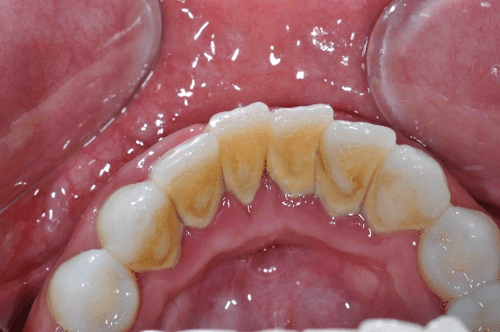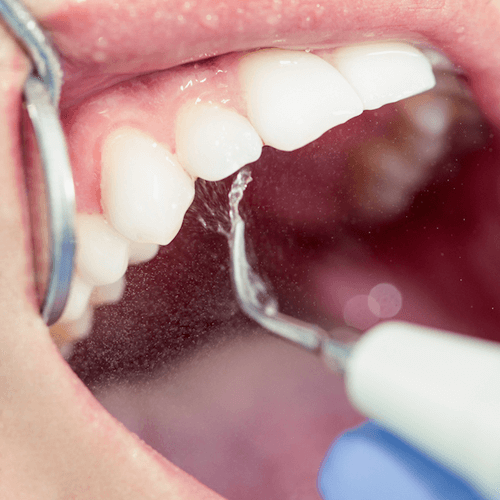Dental calculus appears as a result of plaque build-up. Our saliva contains a lot of different minerals that can precipitate in the plaque, causing it to turn into calculus. Unlike plaque, the calculus is hard and it has to be professionally removed. If plaque is not removed regularly with brushing and flossing it will transform into calculus. It is also known as tartar and it can cause several dental problems. First of all, it causes pressure to the gums which at the end can result in a gingival recession. Calculus and plaque are the most common factors to cause gum disease. It can appear above the gumline and in that case, is visible. Tartar can also from below the gumline, in which cases are not visible to the patient. It is very firmly attached to the tooth surface and it can only be removed by a dentist or dental hygienist.
Causes:
The main cause of calculus is improper oral hygiene. Dental plaque if not removed regularly is transformed into calculus. The bacteria located in the plaque uses food leftovers to create acids that are harmful to the teeth. All of the minerals that are present in the saliva are soon incorporated into the plaque and it becomes a hard substance that is firmly attached to the teeth. This happens mostly to the lingual surfaces of the mandibular incisors and the vestibular surfaces of the maxillary posterior teeth. The most common location of the dental calculus is above the gumline. It can also be located under the gumline, which means that it is placed in a periodontal pocket. The colors of the types of calculus are different. The supra-gingival one is lighter and has a yellow to light brown color. The sub-gingival one has a significantly darker color. People who smoke have a higher tendency of having calculus.
Importance:
Dental calculus and plaque are the two things that lead to periodontal disease. Once the tartar is formed, it starts applying pressure to the gums. This will first lead to gingivitis, an inflamed gingiva, that bleeds and is irritated. It will soon affect the connective tissue and separate the gingiva from the teeth. This is the beginning of periodontal disease. These lost connections cannot be repaired. From there the process will only go further and spread to the sub-gingival surfaces.

Treatment:
Dental hygienists and dentists can remove dental calculus professionally. It has to be removed with special instruments called ultrasonic scalers. Dental calculus cannot be removed with a brushing. The procedure is usually painless, with a slight discomfort. People with a lot of calculus and sensitive teeth might feel a more severe discomfort. If it’s not regularly removed it will only become larger and cause more problems. That is why oral hygiene and dental checkups are very important. Brushing after every meal, and regular flossing are essential to a healthy mouth. Periodontal disease is the most common one in the world and it can only be prevented with good oral care.





